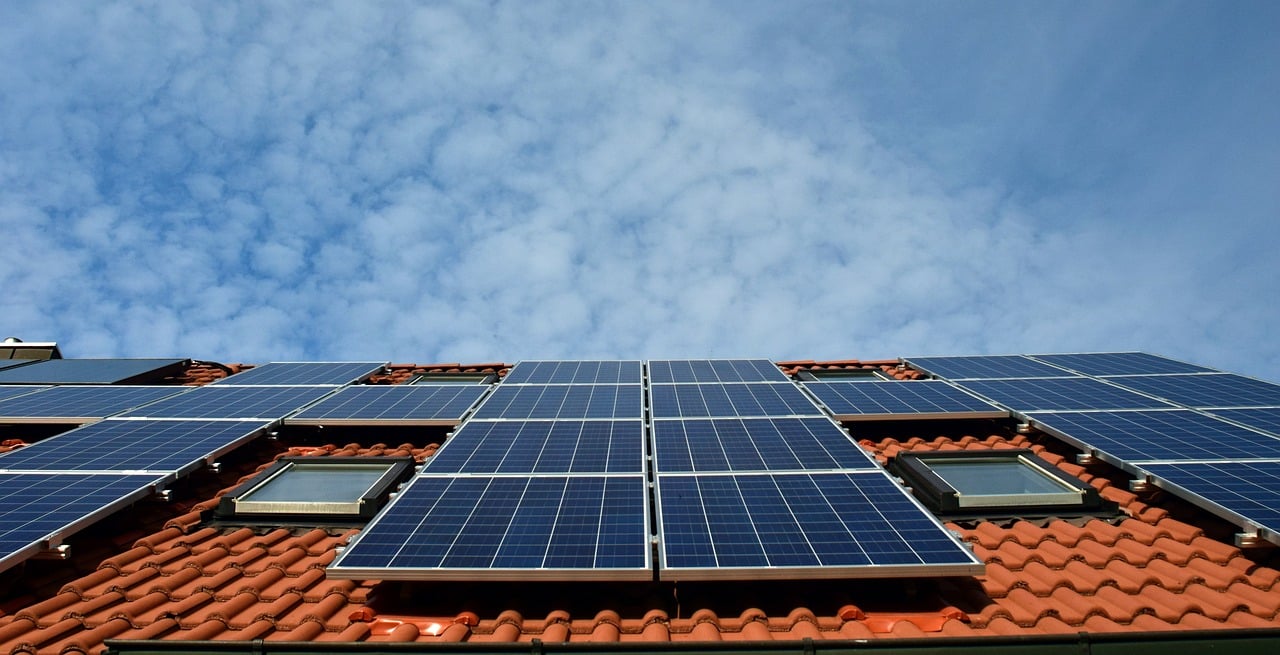The Aesthetic Appeal of Solar Panels in Modern Homes
Solar panels have evolved from solely being a symbol of green energy to a stylish element in modern home design. Their sleek, modern look can enhance the architectural appeal of contemporary homes. With advancements in technology, solar panels now integrate seamlessly with various architectural styles, offering both functionality and aesthetic value.
Incorporating solar panels into a home’s design doesn’t just provide environmental benefits—it also adds a cutting-edge look that can make a property stand out.
Homeowners are discovering that these panels can complement building materials and contribute to a harmonious overall design. This trend reflects a growing recognition of the panels not only as energy solutions but as design assets as well.
Architects and designers are increasingly leveraging the potential of solar panels to redefine modern aesthetics. By carefully placing and selecting panels, they can transform what was once seen as utilitarian into a feature that enhances visual appeal.
This shift illustrates how renewable energy solutions can be harmoniously integrated into the fabric of contemporary living spaces.
Emergence of Solar Aesthetics in Modern Architecture
As solar panels become integral to modern homes, their design evolves to not only serve functional purposes but also aesthetic ones. This shift is influenced by both historical advancements and cutting-edge technological developments.
Historical Context of Solar Energy in Home Design
The focus on solar energy for residential use began in the mid-20th century. Initially, solar panels were primarily functional, with little regard for aesthetics. Early designs often featured bulky structures, making them difficult to integrate seamlessly with modern homes.
In the 1970s, the oil crisis led to increased interest in renewable energy sources. Architects began exploring ways to incorporate solar technologies into home designs. This period marked the start of a gradual shift towards integrating functionality with aesthetics.
The Rise of Modern Technology
If you need solar panels today, you’ll get something vastly different than what was originally available in the 1970’s. Technological advancements have played a critical role in redesigning solar panels, making them more visually appealing.
Innovations like thin-film solar panels have allowed for sleeker, more flexible designs that blend with various architectural styles.
Today, manufacturers offer options such as solar roof tiles and even transparent panels. These developments help solar installations align with the sleek aesthetics of modern homes.
Such designs ensure that solar panels are functional and complementary to the building’s overall look.
Evaluating the Visual Impact of Solar Installations
Solar installations provide the dual benefit of renewable energy production combined with potential aesthetic enhancements. Their visual impact is influenced by architectural integration, design variations, and how they harmonize with the surrounding environment and structures.
Integration with Architectural Styles
Solar panels can be seamlessly incorporated into various architectural styles, creating a cohesive look. In modern homes, sleek panel designs complement minimalist and contemporary aesthetics. Traditional homes might blend panels by selecting materials and colors matching existing roofs, like clay or slate.
Some architects design entire structures with solar in mind, using panels as aesthetic elements. Integrated solar shingles offer another option, allowing systems to maintain historic or thematic integrity without sacrificing aesthetics for functionality.
Color and Texture Variations in Panel Design
Today’s solar panels come in diverse colors and textures, broadening their aesthetic alignment possibilities. Homeowners can choose between standard blue-black panels or more discreet all-black panels that integrate subtly into dark roofs. Textured panels with matte finishes reduce glare and provide a more natural look.
Innovative technologies also enable flexible panel shapes and semi-transparent designs, which harmonize with different visual styles and allow selective sunlight penetration.
Landscape and Roof Aesthetics
The placement of solar panels affects both landscape and roof aesthetics significantly. Strategically positioning panels on less visible roof planes can minimize visual clutter. Ground-mounted panels in gardens can be integrated with landscaping to maintain visual harmony without detracting from the surrounding environment.
Panels can complement natural landscapes by matching angles and colors. Roof-integrated designs reduce the need for bulky external frames, preserving the roof’s original look and enhancing the home’s overall aesthetic appeal.
Functional and Aesthetic Harmony
The integration of solar panels into modern home designs goes beyond mere functionality. Homeowners seek solutions that not only provide energy efficiency but also maintain the visual appeal of their residences. Achieving a seamless blend of efficiency and aesthetics requires innovative approaches and thoughtful design.
Balance Between Efficiency and Appearance
Balancing efficient energy conversion with a home’s visual appeal is a primary concern for homeowners. Monocrystalline panels offer a sleek design with high efficiency. These panels commonly feature a clean, uniform appearance due to their single crystal silicon structure.
In contrast, polycrystalline panels, while often less costly, present a more speckled look which might disrupt the aesthetics some homeowners desire. Black-on-black panels are a popular choice for those prioritizing elegance. These panels effectively complement darker roof shingles, reducing visual contrast.
The positioning and angle of solar panels also impact aesthetic harmony. For instance, integrating panels into roof tiles or utilizing building-integrated photovoltaics (BIPV), such as solar shingles, offers a subtler solution.
Innovations in Discreet Solar Solutions
Recent innovations have focused on making solar technology less conspicuous. Solar skins are a novel development, offering customizable designs that match a roof’s existing pattern. This technology provides a tailored look without sacrificing efficiency.
Another solution includes solar glass. It allows for power generation through windows, eliminating the need for traditional panels in some cases. Thin-film solar panels offer another discrete option as they can be applied to a variety of surfaces, blending with different architectural styles.
Despite being generally less efficient than traditional panels, ongoing advancements aim to increase their energy output. For those considering solar installation, these innovations present compelling alternatives that marry form and function seamlessly.
Today’s homeowners no longer have to compromise between efficiency and aesthetics. Modern solar panels are designed to deliver high performance while seamlessly blending into the home’s architecture.
With sleek designs and advanced technology, these solar solutions provide both energy savings and visual appeal, making them an ideal choice for any residence.







